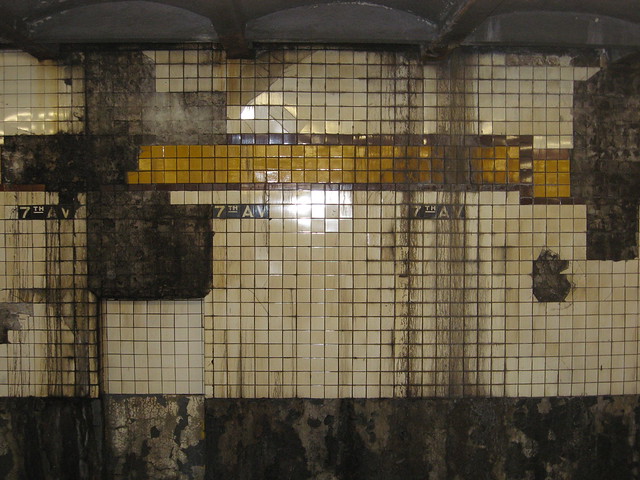 Over the past few months, as the spring legislative schedule has inched closer toward summer recess, I’ve beaten the drum about the MTA’s current capital funding. The five-year plan is short $10 billion, and it’s only funded through the end of 2011. As Albany has struggled with the state budget, it must also turn its attention to the capital program, and it’s no stretch to say that the city’s economy depends upon it.
Over the past few months, as the spring legislative schedule has inched closer toward summer recess, I’ve beaten the drum about the MTA’s current capital funding. The five-year plan is short $10 billion, and it’s only funded through the end of 2011. As Albany has struggled with the state budget, it must also turn its attention to the capital program, and it’s no stretch to say that the city’s economy depends upon it.
Without a properly-funded capital plan, the MTA’s physical infrastructure will further erode. Without a properly-funded capital plan, tracks will break down, trains will be delayed and business will suffer. Without state support, the riders will have to pay more and more so that the MTA can simply maintain the current levels of service.
Today, in the latest edition of Crain’s New York Business, the trade mag talks about the need to fund the capital plan. While the city’s commuters and straphangers are relying on MTA investments, so too is the construction industry. I’ll excerpt the editorial as it touches upon these various issues:
State lawmakers, who congratulated themselves two months ago for closing a $10 billion budget gap, have made no progress in filling another hole that is just as big. The Metropolitan Transportation Authority has no capital funding in place for the next three years and needs the state to identify revenues this year to issue bonds. That will be controversial, so Albany needs to get moving.
Gov. Andrew Cuomo and legislators must undertake the mission knowing that the capital plan cannot be shrunk significantly. MTA contractors could reduce construction costs by a few hundred million dollars by negotiating new work rules with their unions; the MTA could pare the price tag a bit more by delaying nonessential improvements. But if there’s one thing we’ve all learned about the transit system over the years, it’s that postponing vital work backfires…
Maintaining a state of good repair, improving service and finishing large projects—East Side Access, the Fulton Transit Center and phase one of the Second Avenue subway—are crucial in order for the regional economy to grow. It won’t happen without money.
Funding for the MTA is not an expense but an investment with proven returns. Unfortunately, some lawmakers prefer to portray the agency as a cesspool of waste and to use it as a scapegoat to distract voters. It’s time they acknowledge the MTA’s role in reviving the city and its suburbs, and the efficiencies Chief Executive Jay Walder has found in the past two years. He shaved $525 million from the operating budget, including $93 million in service cuts to underutilized bus and subway lines. He lopped $2 billion off the capital plan without killing important projects.
It’s Albany’s turn now. Legislators must identify at least $750 million in annual revenues to finance 30-year bonds. Fares have been increased for three straight years and are scheduled to rise 7.5% in 2013, so riders ought to be spared until then. Businesses funded most of the 2010-11 capital plan with a payroll tax that generates $1.5 billion annually.
How does Crain’s propose finding the funding then? Through road usage fees: “One option is to raise more revenue from drivers. A variable fee on vehicle trips that congest Manhattan’s central business district is logical, since they impose large costs on the economy. Also, the payroll tax mechanism should be improved to lessen its political toxicity and increase compliance.”
As Crain’s notes, transit ridership has surged by 50 percent over the past 15 years as capital investment in the system has grown as well. The state and its subways are heading toward a turning point, and while Albany may have to make some tough choices, it cannot leave 5 million daily subway riders out in the cold. The city’s economy simply cannot take the hit.

















 (42nd Street Shuttle)
(42nd Street Shuttle)




